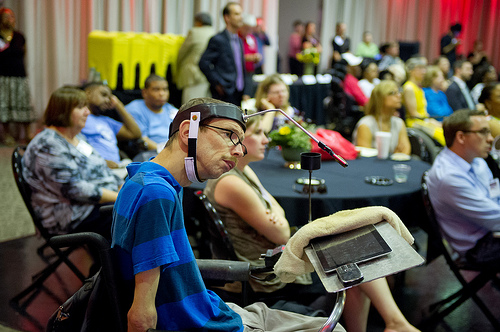


Matthew Brault’s new report for the United States Census Bureau, Americans With Disabilities: 2010 (PDF), devotes a large portion of text to the analysis of economic characteristics for people with disabilities; shedding light on the need to have increased employment opportunities not only to promote the independence and inclusion of these individuals, but also to ease the burden on the supporting agencies for a population that has increased by 2.2 million during the five-year period between 2005 and 2010.
As noted yesterday, the instrument used by the Census Bureau, known as the Survey of Income and Program Participation (SIPP), helps agencies like the Social Security Administration, the Center for Medicare and Medicaid Services, and the Administration on Aging assess future needs. The section header “Economic Characteristics” leads off page 10 of the report, under which Brault writes:
Improving economic conditions for people with disabilities has been a focus of federal disability policy for several decades. Efforts have traditionally taken a two-prong approach: (1) to assist in reducing or eliminating the barriers to participation in the workforce, and (2) to provide cash and in-kind benefits to those who experience material hardship as a consequence of remaining barriers.
The Census Bureau newsroom contains presentation slides used by Brault in a “Washington Journal” segment on C-SPAN last week. Slide 13 (PDF), “Employment Status By Disability Status,” illustrates the dramatic impact having what is classified as a severe disability has on one’s ability to find employment; with a full 50% of this population not having worked at all in the past 24 months.
Slide 16 (PDF) provides even more stark information about the plight of people with disabilities by drawing a correlation between the decrease in average monthly earnings and the number of areas in which a person’s disability manifests itself in terms of physical, mental, or communicative.
These two slides get to the heart of the move toward “Employment First” policies being adopted by state agencies. The desire is to shift more resources toward what Brault has identified as the first prong (eliminating barriers to employment); thereby alleviating the burden placed on the second prong (cash and in-kind benefits) to provide assistance to people with disabilities who may be able to contribute to the workforce.
Yet the primary barrier that still needs to be overcome is the perception that people with disabilities cannot get the job done. Whether through vocational rehab programs that provide career training for people with disabilities, or contract service organizations that perform manual labor tasks for companies, businesses can play an important role in removing that barrier by giving people with disabilities a chance to prove what they are capable of; while at the same time easing the strain on the social supports.
Comments?
Image by MDGovPics, used under its Creative Commons license.